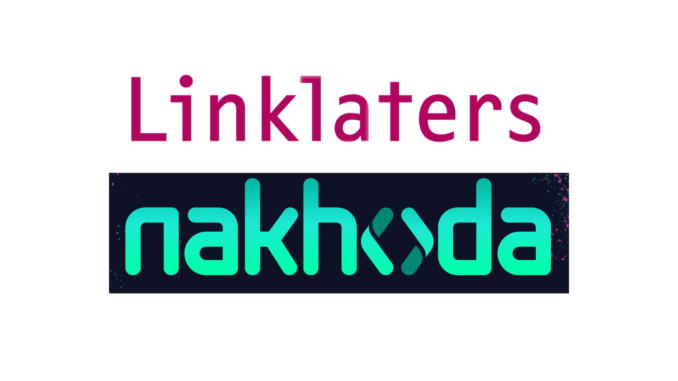
You may have heard that global legal services business, Linklaters, has its very own legal AI platform, Nakhoda. But what is it doing? The answer is: they are trying to reinvent contracting. Why? Because they believe AI, as we have it today, doesn’t work as the legal sector wants it to.
And yet, despite this mighty aim the surprising thing is that many in the market don’t know much about this home-grown legal AI team, which it has been developing steadily since 2015 and today numbers around 25 people.
Artificial Lawyer was invited in for some rare access to chat with key team members, Edward Chan (Linklaters partner and founder of Nakhoda) and Partha Mudgil (COO of Nakhoda) to find out where it is now and what the global giant is trying to do.
Chan and Mudgil’s fundamental view is that AI systems, as we have them today, don’t really work. To make them work what we need is a new approach to contracting.
Now, you are probably thinking: ‘Hold on? Why is an AI tech team saying AI doesn’t work?’ Well, let’s explore this.
In a nutshell the argument goes like this: in any ‘normal’ environment a tech application should be able to provide a complete solution. You don’t want to go onto Google search, get 70% of the result you need and then get a message on the screen that tells you to go and find some old paper Yellow Pages directories to complete the task.
That is the reality of where we are now with AI doc review – in many cases. What we can do now is incredible compared to the past, but still….there is room for improvement.
Chan and Mudgil – despite living and breathing the world of NLP and machine learning – don’t want to accept a world where the ‘AI’ is just ‘useful’, they want it to do the job people want it to – i.e. do the whole review task and do it as near to perfectly as possible.
But, that’s really hard, isn’t it? You ask. Yes. It is, because legal documents are often unpredictable mish-mashes of unstructured data.
So, do Chan and Mudgil have a solution? They do. Their approach is to change the way we contract in the first place, then fit around the AI into one beautifully integrated solution. I.e. get the ‘legal data’ into the right shape from its inception so that AI tools can give near perfect answers.
‘At the moment there is a huge amount of work to get legal data to the point where people can use some of this AI tech,’ says Mudgil. ‘GCs don’t understand the current limitations of AI systems.’
But, what if the contracts you made were 100% created in a digital environment? Where as much as was sensibly possible was templated, or pre-made, or came from the firm’s very well developed and 100% transparent clause bank? What if clients and law firms and other parties involved in a contract were all working off the same system, even the same sets of language and legal terms? The simple answer is: automated review would be significantly improved.
But, human language is still a nightmare for structuralist thinkers such as Chan and Mudgil, (read some Jacques Derrida if you want to be convinced of this.)
One might say that the legal world at present is focused on providing imperfect solutions to solve problems that because of their nature can never be perfectly solved. The only way to solve the legal data problem is to solve it at its point of creation.
‘We were trying to solve a problem and we didn’t care if that was via AI or using Word,’ Mudgil adds. ‘This led to a broader view.’
So, back to a broader view in this scenario means creating something that people with experience in document automation and KM templating will understand immediately: reduce the range of variables. Make documents and their legal data highly predictable for algorithms from the moment they are created.
Or as Chan puts it: ‘Law has an historic mountain of data and this is a struggle. The question is: do you stop adding rubbish to the mountain?’
Or, perhaps the key word here is ‘how’ can you stop adding to this mountain?
One example of their approach is a Nakhoda platform service for ISDA contracts. Linklaters is working with the global rules body for derivatives to develop the next generation of contracts that relate to a wave of new rules changes on margins.
Having document automation and templates, and model clauses, and an agreed methodology and platform for contracting creates a new ‘built environment’ for contracting. And the ISDA system they have made is very comprehensive, even with an ability to find counter parties to agreements.
Naturally, once all of this work product is made in this digital environment, searching and extracting data from those contracts is a lot easier. Why? Because the extraction tech you are using already has a very good idea of what it’s about to find.
The hard bit now is making it all happen. After all, people can contract however they like: ‘Have MS Word, will contract’….one might say.
‘Our hypothesis is to fundamentally disrupt the way people make contracts,’ they say. ‘But, we need an incentive to create docs automatically. Can we convince people to do something that changes how they do things?’
The simple answer is: yes. Also, creating very specific documents and a contracting workflow related to one aspect of derivatives is one thing….for the whole super variable world of the law…? Wow, that’s something else.
But, it’s a fascinating approach and clearly it can work. The challenge now is scale and providing for multiple use cases. But, derivatives looks like an excellent place to start.
—
For some more information on their ISDA doc platform check out the short video below:

4 Trackbacks / Pingbacks
Comments are closed.